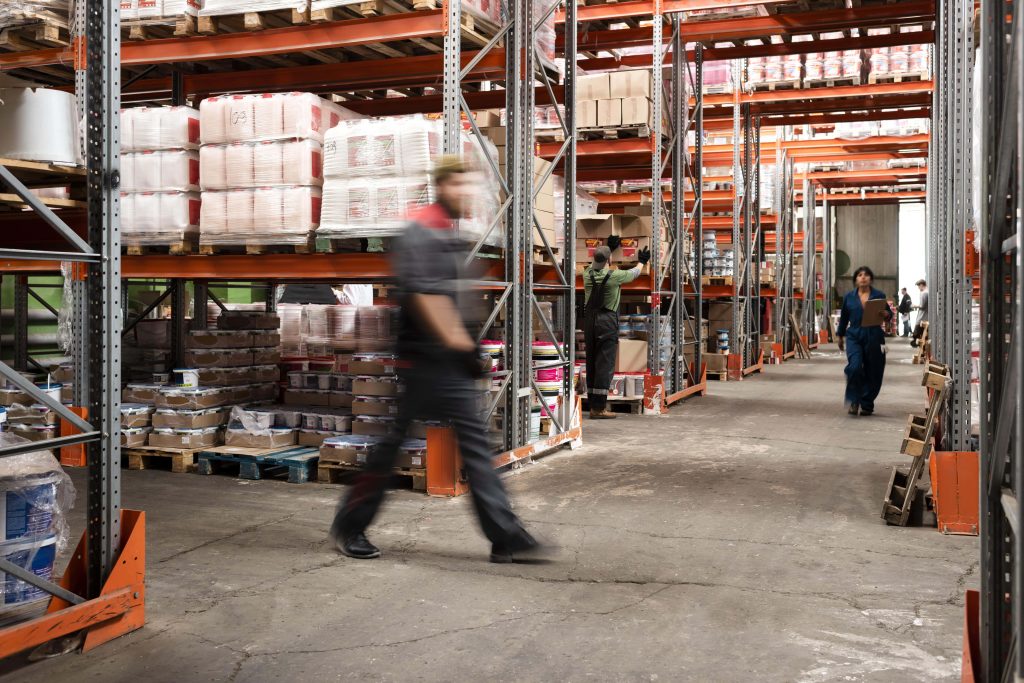Why Businesses Hate Automating Their Warehouses

In 2025, automation seems synonymous with warehouses: robots picking and transporting goods, automated guided vehicles navigating narrow aisles, and sortation systems organizing products on conveyors.
Yet, several businesses refrain from embracing automation because they assume this will need massive budgets, huge implementation teams, and months and months of civil work apart from possible reformatting of their racks. But what if we told you there was an easier and quicker way to do this?
The Myths Surrounding Warehouse Automation
Warehouse automation is a strategic priority in a highly complex supply chain environment. However, several myths surrounding automation make business leaders frustrated with the idea of automation. Let’s look at the top three misconceptions:
Myth 1: Warehouse automation is a financial burden
When business leaders hear the word automation, they invariably imagine expensive upfront investments. From robots to conveyor belts, extensive civil work to floor prep – these costs can seem daunting, especially when compared to the cost of manual labor or traditional warehouse setups.
When new systems arrive, there is also the concern of integrating them with existing infrastructure. This adds to the cost of warehouse automation via modernization or rebuilding of existing systems, implementation, hiring, specialized training, etc. It contributes to the belief that automation is a financial burden rather than a strategic investment.
Myth 2: It takes years of planning
Another common misconception about warehouse automation is the time it takes to establish a running environment. This includes conducting an extensive study of existing warehouse operating systems and processes, determining what new tools are required, and examining the complexity of integrating new technologies into the existing environment.
Many leaders further assume that warehouse automation will eliminate the human workforce, requiring them to manage employee transitions, retrain them, and establish a strategy to balance technology innovations with human expertise.
Myth 3: Automation requires a large implementation team
When automating their warehouses, leaders often envision a large implementation team overhauling existing infrastructure, removing old systems, and making significant physical modifications. They also foresee bringing facility managers, engineering experts, software development teams, and project managers to design, test, and deploy automation systems.
Hiring and managing this diverse team of experts who work around the clock, transforming the warehouse and ensuring compatibility is often considered with skepticism. Leaders would instead continue operating their legacy systems rather than go through these multifaceted changes and disruptions.
The Actual Truth About Warehouse Automation
Business leaders expect automating a warehouse to be complex, time-consuming, and expensive, requiring extensive civil work, floor prep, racking changes, and other such constraints. However, this is no longer true in today’s context.
From ergonomic pick walls to gamified operator consoles, modern automation solutions make the tedious picking and sorting process fun. This helps maximize operator productivity, reduce error rates, and streamline operations. In-built learning algorithms optimize SKU placement for fast tote presentation, enabling seamless storage, retrieval, and pathfinding.
Here’s the actual truth about warehouse automation solutions:
- Easy to retrofit: Modern automation solutions can be retrofitted into existing mezzanines, low-ceiling, and high-bay racks, requiring little to no civil work or floor preparation. Easy and quick to install and maintain, these solutions allow business leaders to get up and running in no time, transforming warehouse operations.
- Modular and scalable: Modular and flexible, new-age solutions platforms let businesses scale automation, one aisle at a time. Leaders can continue warehouse operations without disruption since no ripping and replacing are involved. Bot paths, lifts, and bots are designed to scale with business growth, allowing firms to meet demand fluctuations effectively.
- Simple integration: Today’s warehouse automation solutions have universal pick walls that adapt to different operational needs. Flexible cloud-native orchestration allows seamless integration with WMS/WES, making customization and scaling easy. Multi-tenant architecture can support multiple users or businesses within the same infrastructure, leading to fast throughput and streamlined workflows.
A Real-world Use Case
The Challenge: A B2B fulfillment manufacturer specializing in apparel and accessory products struggled with inefficient high bay case picking. The existing legacy crane technology could not keep up with demand, leading to unusable space.
The Solution: The manufacturer could streamline its picking and sorting processes by opting for a warehouse automation solution. The Carte+ automation platform could easily be retrofitted into the existing rack structure without additional effort or permits.
The Benefit: Seamlessly integrating into the existing WES, the solution enabled the manufacturer to transform its warehouse operations while enjoying additional storage for 11,000 SKUs.
Reimagine Warehouse Automation with Carte+
The Carte+ warehouse automation solution enables business leaders to get more from their existing investments. It is easy to retrofit and install and helps firms transition to automated operations quickly. Integrating quickly with existing systems, Carte+ allows businesses to reap the benefits of automation and easily manage seasonal demand.
Whether you are looking to streamline good-to-person fulfillment or effectively manage returns, Carte+ makes warehousing and distribution effective across different use cases. Explore our solutions today!

